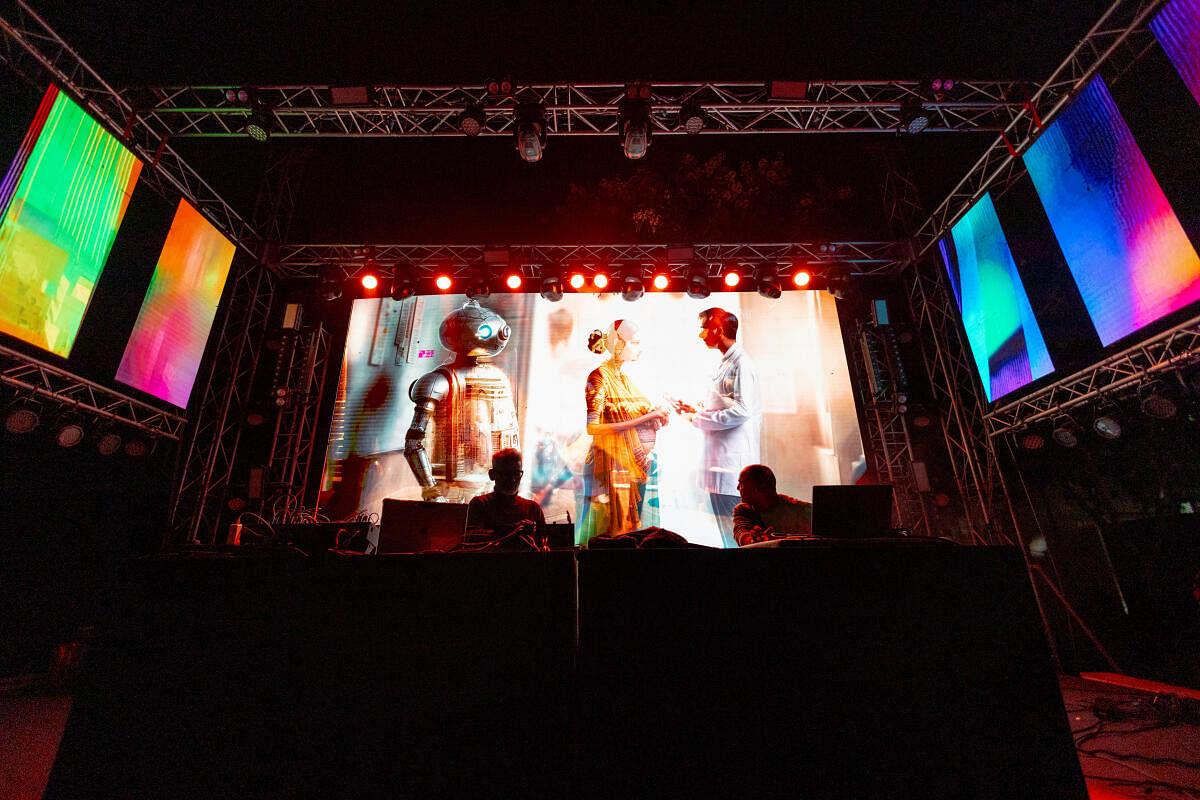
This Friday, Bengaluru will witness a live transmedia performance by electronic producer Murthovic (MSR Murthy) and Thiruda (Avinash Kumar). It is based on the fictional tale of a cultural cyborg, Meenakshi, and her crew of artistes, set in the year 2079 (see box).
Titled ‘Elsewhere in India’, the show hinges on projections of digital human performers, virtual costumes, and archival images, in addition to music.
While earlier, a live gig was purely about the music, increasingly, artistes like Pineapple Express, Disco Puppet and Aerate Sound are relying on visuals to add a layer of depth. “In the last few years, visuals have become important. It’s a great way to make the performances more immersive,” says Murthy.
Show business
Co-founder of Mantis Shrimp Creative, a tech studio that creates stage design and visuals for live gigs, Kunal Singh, is well versed in the art of digital storytelling. Talking about the popularity of LED screens and projections, he says, “Earlier there were barely one or two venues. With multiple spaces to choose from, it has become a matter of setting oneself apart. Also, now we have easy access to technology to make it possible.”
He believes that music enthusiasts are looking for similar experiences. “They know what shows are like, say in London or New York, and have expectations, and musicians are willing to oblige,” he says and adds that there is a change in the way the music industry is viewed. “Music was never a viable career option. Now, with visual jockeys, sound engineers, programmers, etc, that is not the case. We have the technical skill needed for these highly sophisticated shows.”
Light and fireworks
Software like TouchDesigner and Resolume have made it easier for bands to bring in the visual element to performances, says electronic music producer, Rahul Giri, better known as _RHL. “It’s especially effective for electronic music, because it’s not as engaging as other genres. So the visuals help keep the audience hooked,” he explains.
Each band’s visual jockey (VJ) designs what the show will look like. Factors like light, screens, projections and special effects (SFX) come under his or her purview. “Most concerts have SFX now. These are implemented with pyrotechnics, lasers, confetti, flames, etc,” says Aniketh Ashok, founder of Gigman Live, an artist management agency with clients such as Sanjith Hedge, Vasuki Vaibhav and Kutcheri.
Ideally, the VJ also discusses the set list with the musicians to create the right sequence of visuals to match the tempo of the songs. However, it is not always possible, especially in a festival where one tends to work with multiple artistes. Sometimes, one needs to ‘guestimate’ and do a bit of homework, says Singh, whose most recent project, the music festival, Magnetic Fields, in Rajasthan saw him working with 15 different acts.
3D in demand
Singh shares that 3D holographic projections and projection mapping are in demand. “Because mapping is done against buildings or uneven surfaces, one needs to look at the colours and texture of the screen while designing the visuals. On regular LED screens, one has a lot more flexibility,” he says.
Game tech meets AI art
A coming together of Carnatic and electronic music, ‘Elsewhere In India’ by Murthovic and Thiruda uses video game technology and AI art. It features the work of 40-plus folk and classical artistes from across south India and Kolkata. Names like Dilruba Saroja (who has worked with A R Rahman and Ilaiyaraaja), and gaana singer Dharani are part of the project, which features traditional percussion instruments like parai (played at funerals) and panchamukha vadyam (five-faced metal drum).
*March 24, 8 pm, Bangalore International Centre, Domlur.